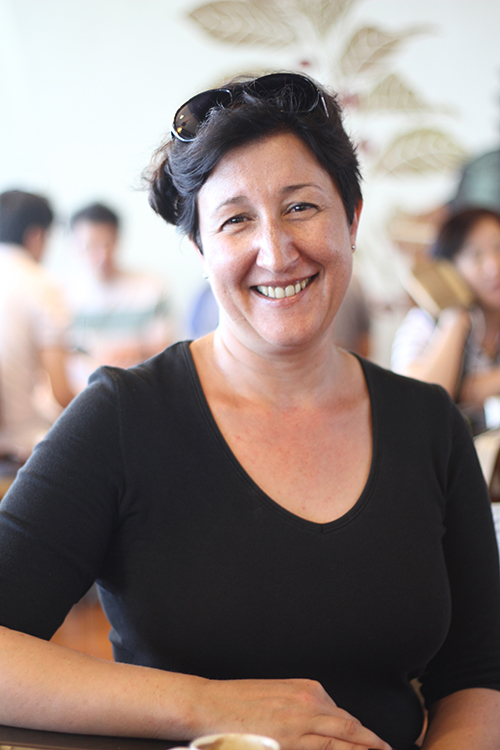
Anna Paradowska, who teaches Korean studies at the University of Warsaw, says that she has been able to understand both Korean and Polish much more deeply as she has been working on a Korean-Polish dictionary.
"Because we don't have such a texture in Polish foods."
Professor Anna Paradowska chose the Korean adjective jjolgit-jjolgit (쫄깃쫄깃), a word often used to describe the texture of rice cake, to explain how difficult it is to translate Korean adjectives into Polish.
The Korean studies professor at the University of Warsaw has been working on a Korean-Polish adjective and verb dictionary since last year, with funding from the Academy of Korean Studies. When it's published, it will be the first direct Korean-Polish dictionary. Until now, Korean language learners in Poland had to study Korean using Korean-English or English-Korean dictionaries.
To start with, she wanted to develop an adjective and verb dictionary, considering the volume of work needed to translate every Korean word into Polish. Also, she felt that Korean adjectives were one of the most difficult parts of the language for Polish learners, so she wanted to start with adjectives. "This is only going to be the beginning of a Korean-Polish unabridged dictionary, and it's expected that it will be a great help for Polish students who study Korean," she said.
One of the most difficult parts of this project is, she said, finding accurate and the most appropriate Polish word for each Korean word. Korean words that have no exact Polish equivalent are difficult, but some words are, she said, more difficult for a Polish person to comprehend. "Understanding, for example, that you say, 'It's cool,' when you eat something hot, or the difference between dandan (단단) and ttak-ttak (딱딱) -- which both mean 'hard' --is difficult. The nuance in Korean adjectives does not always come across directly into Polish. For example the descriptive verbs shiwon-hada (시원하다), seoneul-hada (서늘하다) and seonseon-hada (선선하다) are all on the temperature spectrum from chilly to cool to pleasantly refreshing," she said.
A sense of achievement always follows such challenging works. "All of us working on this dictionary have studied and taught Korean for a long time, but this is definitely an opportunity for us to learn Korean at a deeper level. This is one of the greatest achievements for us," she said. "In addition to this, we're even able to understand our mother tongue better, which leads us to better recognize the differences between Korean and Polish and, eventually, will be helpful for our research into the Korean language."
The Korean-Polish adjective and verb dictionary will be published as an e-book in 2017, said the Academy of Korean Studies. The academy says that there're more and more universities and academic institutes that teach the Korean language and Korean studies. Since October 2015, the University of Warsaw, where Paradowska teaches, has offered a Korean studies major in its Oriental Studies Department, with 110 students in the course this year alone. Research into Korean studies is also quite active in Poland. A Central & Eastern European Society of Koreanology conference will take place at the Adam Mickiewicz University in Poznan this coming October, and a seminar will be held at the University of Warsaw in November.
"Not only in Poland, but across Eastern and Central Europe, there're a growing number of people who want to learn Korean thanks to their affection for Korean literature, Korean music and Korean dance. This is the perfect time for us to encourage them to learn more about Korea and to let them know more about Korea, and we're ready to be the bridge for all the people out there."
By Chang Iou-chung
Korea.net Staff Writer
Photo: The Academy of Korean Studies
icchang@korea.kr